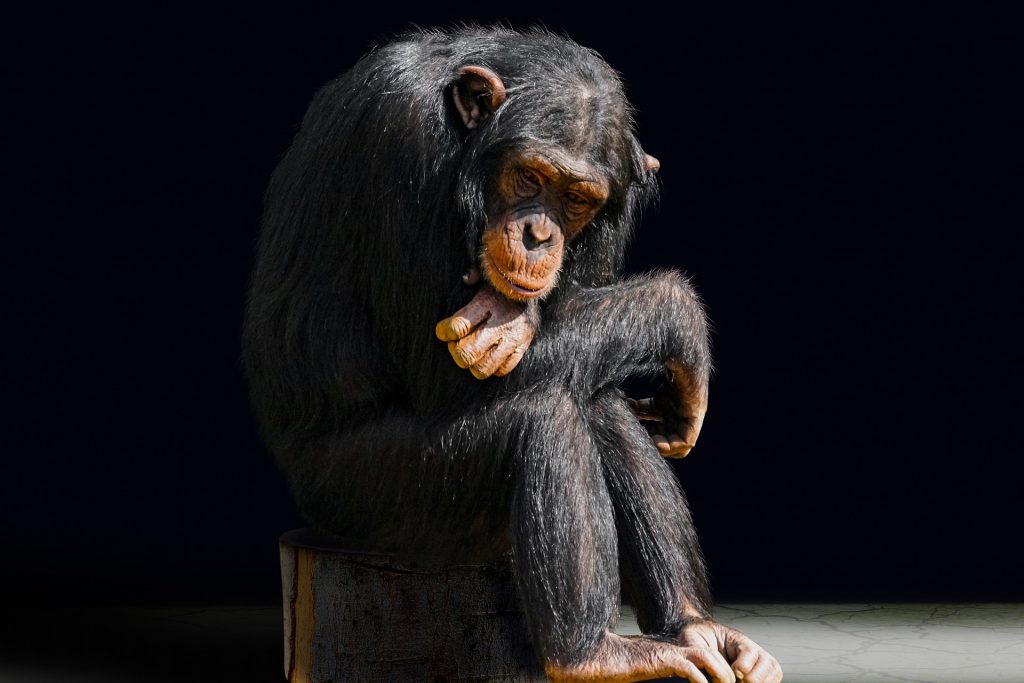Welcome to Part 2 of our series on Saptaswara – the 7 Steps to a more aligned existence. The Saptaswara module we created has helped many people over the years reflect on their own individual journeys thus far and create a roadmap of sorts for their futures. In the first post of this series, we discussed the first step, Maitri – the attitude of openness and friendliness in which we can offer to and receive from the world.
Today we will discuss Karma and Dharma, the next two steps in the Saptaswara. Note that none of these steps are linear; consider it more like a spider web, where every thread is attached to the other, and any change in one ripples through them all.
Step 2: Karma
“Let not the fruits of action be your motive, nor let your attachment be to inaction.” – Bhagavad Gita
Karma, as a word, is understood in many ways by many people. It means both an action, and the consequence of the action.
Karma can represent our everyday activities, as well as what we carry as part of our nature into the world every day. We act, and the action reinforces a certain sense of self that becomes frozen and hardened.
The source of our action can be looked at from two sides. One is the internalized and practiced action that comes out of conditioning of a family, culture and education. The second aspect belongs to each of us in the current moment and is constantly growing. By tracing the source of our action, it is possible to enliven the action repertoire.
Each of us, over time, gets stuck in a particular way of dealing with the challenges of our everyday life. This works quite well when there are no surprises or shifts in the triggers that come from the outside world. But when there are new and complex inputs, the nature of our action when not enlarged or enhanced in suitable ways, can lead to often painful results.

When our ‘well-intentioned’ but frozen actions do not bring us the expected results, we end up becoming discouraged and diffident.
Let us examine this with an example. One of the most common entrenched action-reaction patterns is the relationship between parents and their reactive adolescent child. There is a feeling of helplessness in the parent and anger/rage in the daughter/son.
Each time there is a transgression or misdemeanor, the parents get into a lecture mode, where they are trying hard to bring the child into a controllable frame because the world is reacting negatively to the adolescent. The youngster feels pressurised and punished, and reacts with further bad behaviour or action. This goes on endlessly and there seems to be no resolution possible.
At this point, is it possible for the parent/s to stop and look at the thought process as well as action pattern dispassionately and come up with new ways of dealing with the impasse? Can they say “Hey, we are attempting to create a vibrant family system that can respond to the world outside in an appropriate manner. Can you help us to make this work by taking us into your universe of reality?”; or “Can we create new rules for the home that involves your perspective as much as ours?”.
Entrenched habits make us rigid. How many times have you heard a person say, “This is who I am! This is the way it is.”? When we say to ourselves, “I behave like this because I am like this”, we define and limit ourselves. We also deny ourselves the possibilities of experience through a wider range of actions.
Rigidity in the way each of us holds our sense of self can be a source of great tension and problems. One of the ways in which we would examine this posture in the Saptaswara context is to look at the anchors of the personal identity that are unique to the individual and those that are fleeting, based on the contextual responses of the person and finally those that have been internalised from parents and the genetic coding.
When such an examination is made, then it becomes clear that what one calls the self is often only an acquired skin or mask and can be discarded, changed or transformed without any lasting damage to self-esteem. Often times these parts of the self are held on to with obstinacy, more because of pride than because of necessity! We create an action pattern based on the way the world has received us in the past. Therefore, we either act in the same way because it is accepted and affirmed, or we change the way when the world does not receive us with openness.
Sometimes because of deep hurts and traumas, we end-up hiding our real intent and acting in a way that would be conforming to the expectation of the context. Perhaps our real desire is to learn a valuable skill, but due to our inability to say no, we get sucked into office politics and waste our time and energy in that space.
How do we look at our own actions with honesty and clarity so that we can begin to free ourselves from past response patterns and act in the world appropriately and spontaneously? The possibilities are immense and the way forward is to perceive the joyousness of life rather than the tedium of routine.
Step 3: Dharma
When we begin to look at our actions in such a manner, we also begin to observe the reason behind our actions, or rather the space from which our actions emerge. In its most simplified explanation, this basis for our actions is called Dharma. Dharma is the underlying foundation for my actions in this world. It is a combination of ethics, values, and inner commitment.
The theory of dharma is explained as the underlying support and nurturing intent of one’s life. Let us spend a few moments to understand this principle of Dharma, which is the basis for all the religions and philosophies that have emerged in the Sub continent, be it Hinduism, Buddhism or Jainism.
Some of the questions that serious spiritual seekers ask of themselves are:
What is the Dharma that I uphold in this lifetime?
Am I existing for mere pleasure seeking and desire fulfilment?
Is there a greater meaning and purpose to my life?
It is only through the process of seeking for answers to these questions that we would be able to ascertain the meaning and purpose of our life on this earth.
Each of us chooses a job or vocation in our adult life. We spend several decades putting in effort to earn our livelihood, as well as fill up our life with activities that substantiate our existence. What we may not initially realise is that this endless engagement with the commercial world and the market place can result in feelings of stress and emptiness. Few of us have been prepared in childhood to deal with these feelings
It is important to find the time and the space to slow down from the frenetic activity and to re-examine the foundations of our existence. The larger meaning and purpose of life can be understood only by becoming self-reflective. Our deeper purpose emerges when we bring to mind the dreams and aspirations of our ancestors and of our culture. We need to look at critical incidents in our own life and examine the underlying foundation for our assumptions and our beliefs.
If I am a person who is only interested in acquiring wealth, then all my actions get generated from that basis, from the desire for acquisition. I might tone it down by applying concepts learnt by my ‘civilised’ mind, but unless I have deeply reflected on this aspect of myself, underneath all my actions will be the need to grab, to take power, to control.
Thus we see that Karma and Dharma are deeply inter-related. The attitude which I bring to my personal commitment to living defines my attitude to my actions.
Engaging with the Questions

Do I value this world? This is an important part of our question regarding the meaning of life. Without value for life and the world around us that is filled with the people and creatures that form the natural system, without an appreciation of the world we inhabit, our existence can become a burden.
Do I nourish this world or am I a mere consumer and an on-looker? Merely expecting the world to offer oneself endless satisfaction as an entitlement, is both an unfair demand and unjustified expectation. If all I do is take and extract from my environment (which refers as much to people as it does to the natural environment), what does that reveal about my nature?
It is critical to engage with the question “What am I giving back to the system?”. It is only through this engagement with the eternal existence of mutual dependence and energy transfer that our real Dharma or purpose gets revealed.
The redefining of our Karma and Dharma cannot be an intellectual process, it has to be experiential. Our minds are operating systems that build themselves upon a sense of certainty; they do not take kindly to change, and definitely not to an entire reboot!
We also cannot rely on another person to “give us the answers”. In doing so we are taking away our own autonomy and denying the connection to a higher intelligence that we are capable of building. Thus the Saptaswara workshop is largely self reflective, relying on several activities to circumvent the conscious mind and reveal the true state of our deeper being. There is nobody evaluating our progress or our supposed shortcomings, it remains a guided process of self enquiry. And with each step, we move deeper into the layers of our existence, examining and observing with greater clarity.



 Priya is a Yoga therapist in the Krishnamacharya tradition. She adapts Reiki & energy work, Vedic chanting, life coaching & Ayurvedic practices in her healing spaces. She is committed to nurturing collectives that have the praxis of Yoga at their heart.
Priya is a Yoga therapist in the Krishnamacharya tradition. She adapts Reiki & energy work, Vedic chanting, life coaching & Ayurvedic practices in her healing spaces. She is committed to nurturing collectives that have the praxis of Yoga at their heart. Anisha has been on an exploration to understand herself through yoga for the last 15years which led her to teaching yoga, yoga therapy and inner work through yoga.
Anisha has been on an exploration to understand herself through yoga for the last 15years which led her to teaching yoga, yoga therapy and inner work through yoga. Apoorva chanced upon Yoga in her early 20s. A spark was lit within and there was no turning back. Her exploration led her to the Krishnamacharya tradition more than a decade ago. Curious about human behaviour and what drives it, she was thrilled when her search ended (and also began) when she first came upon the Yoga Sutra, which illuminated a path towards answering many questions that had been held for a long time.
Apoorva chanced upon Yoga in her early 20s. A spark was lit within and there was no turning back. Her exploration led her to the Krishnamacharya tradition more than a decade ago. Curious about human behaviour and what drives it, she was thrilled when her search ended (and also began) when she first came upon the Yoga Sutra, which illuminated a path towards answering many questions that had been held for a long time. Anita is a yoga teacher and therapist in the tradition of Sri.T.Krishnamacarya and Sri T.K.V. Desikachar, a Reiki practitioner and a Life Coach. She is also the founder of Vishoka, a center for learning Indic and energy-based frameworks for living and healing. Her deep concern for human suffering and the problems of unsustainable living kept her on the path of seeking an integrated approach to looking at life, living, learning and healing.
Anita is a yoga teacher and therapist in the tradition of Sri.T.Krishnamacarya and Sri T.K.V. Desikachar, a Reiki practitioner and a Life Coach. She is also the founder of Vishoka, a center for learning Indic and energy-based frameworks for living and healing. Her deep concern for human suffering and the problems of unsustainable living kept her on the path of seeking an integrated approach to looking at life, living, learning and healing. Ankit is a seeker in the wisdom traditions of India. The core of his work includes creating dialogic spaces where people can look within and see the connection between their inner and outer lives. Inspired by the likes of Gandhi, Aurobindo, Vivekananda and Guru Gobind his experiments in service took him back to his roots in Punjab where he is creating a community-led model of higher education which is open, inclusive and accessible for all. Ritambhara for him is a space for engaging in a community which is committed to a DHramic life. He anchors his work of learning and leadership in the Antaranga Yoga Sadhana and the humanistic wisdom of Mahabharata.
Ankit is a seeker in the wisdom traditions of India. The core of his work includes creating dialogic spaces where people can look within and see the connection between their inner and outer lives. Inspired by the likes of Gandhi, Aurobindo, Vivekananda and Guru Gobind his experiments in service took him back to his roots in Punjab where he is creating a community-led model of higher education which is open, inclusive and accessible for all. Ritambhara for him is a space for engaging in a community which is committed to a DHramic life. He anchors his work of learning and leadership in the Antaranga Yoga Sadhana and the humanistic wisdom of Mahabharata.